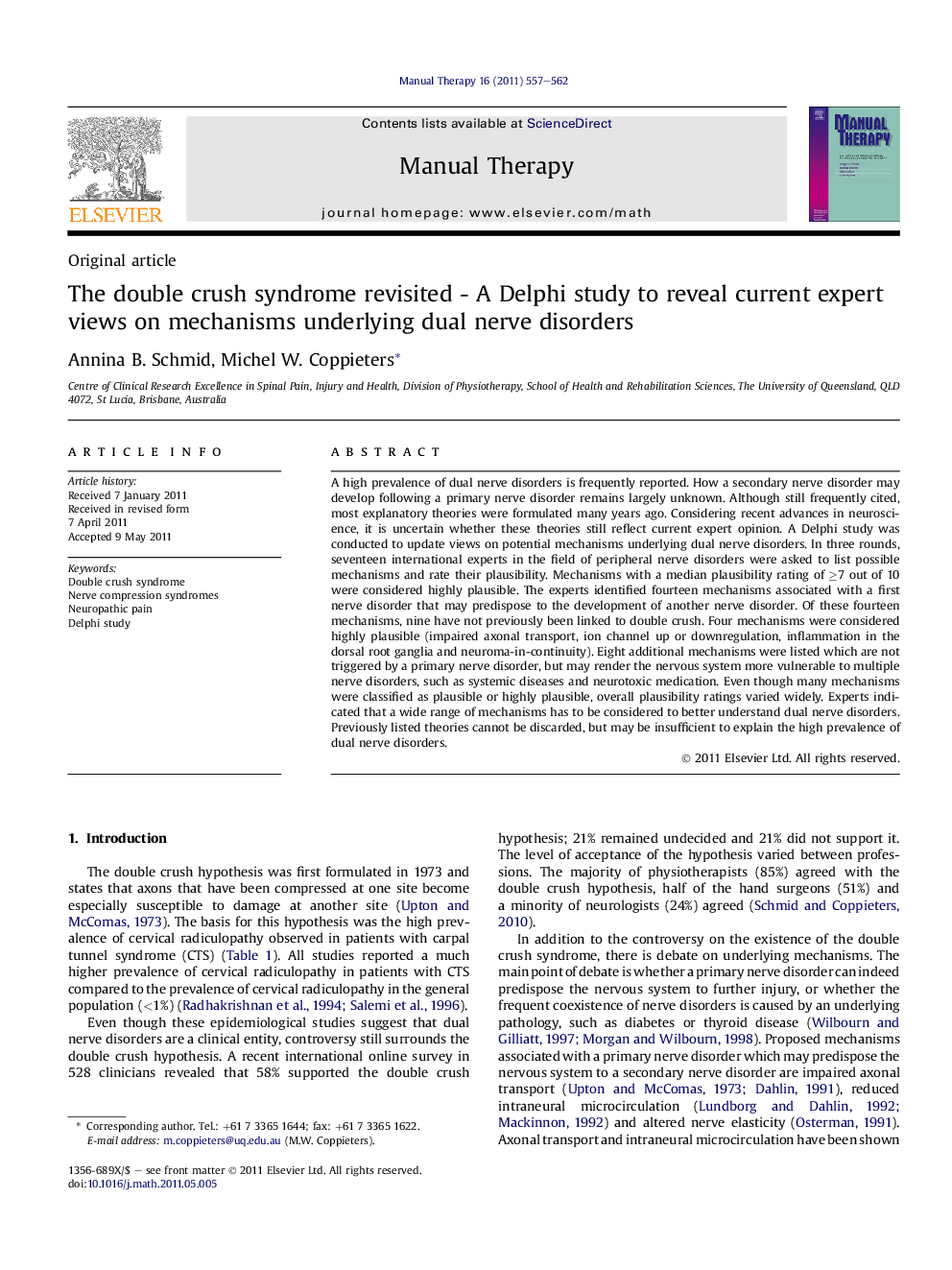| Article ID | Journal | Published Year | Pages | File Type |
|---|---|---|---|---|
| 5864794 | Manual Therapy | 2011 | 6 Pages |
Abstract
A high prevalence of dual nerve disorders is frequently reported. How a secondary nerve disorder may develop following a primary nerve disorder remains largely unknown. Although still frequently cited, most explanatory theories were formulated many years ago. Considering recent advances in neuroscience, it is uncertain whether these theories still reflect current expert opinion. A Delphi study was conducted to update views on potential mechanisms underlying dual nerve disorders. In three rounds, seventeen international experts in the field of peripheral nerve disorders were asked to list possible mechanisms and rate their plausibility. Mechanisms with a median plausibility rating of â¥7 out of 10 were considered highly plausible. The experts identified fourteen mechanisms associated with a first nerve disorder that may predispose to the development of another nerve disorder. Of these fourteen mechanisms, nine have not previously been linked to double crush. Four mechanisms were considered highly plausible (impaired axonal transport, ion channel up or downregulation, inflammation in the dorsal root ganglia and neuroma-in-continuity). Eight additional mechanisms were listed which are not triggered by a primary nerve disorder, but may render the nervous system more vulnerable to multiple nerve disorders, such as systemic diseases and neurotoxic medication. Even though many mechanisms were classified as plausible or highly plausible, overall plausibility ratings varied widely. Experts indicated that a wide range of mechanisms has to be considered to better understand dual nerve disorders. Previously listed theories cannot be discarded, but may be insufficient to explain the high prevalence of dual nerve disorders.
Related Topics
Health Sciences
Medicine and Dentistry
Complementary and Alternative Medicine
Authors
Annina B. Schmid, Michel W. Coppieters,
